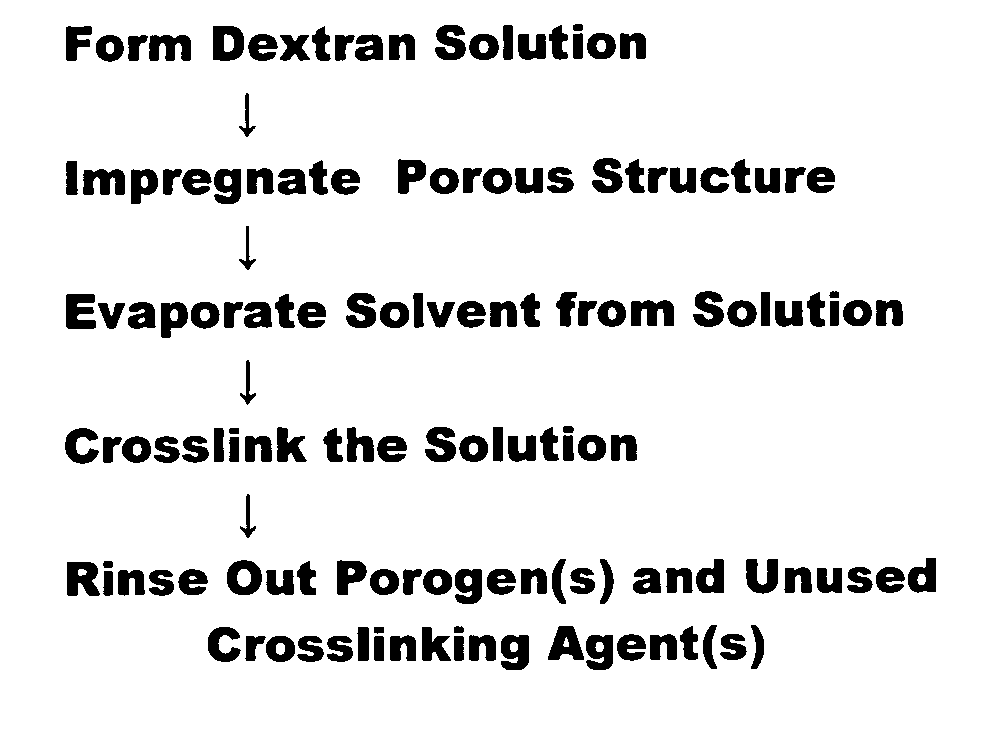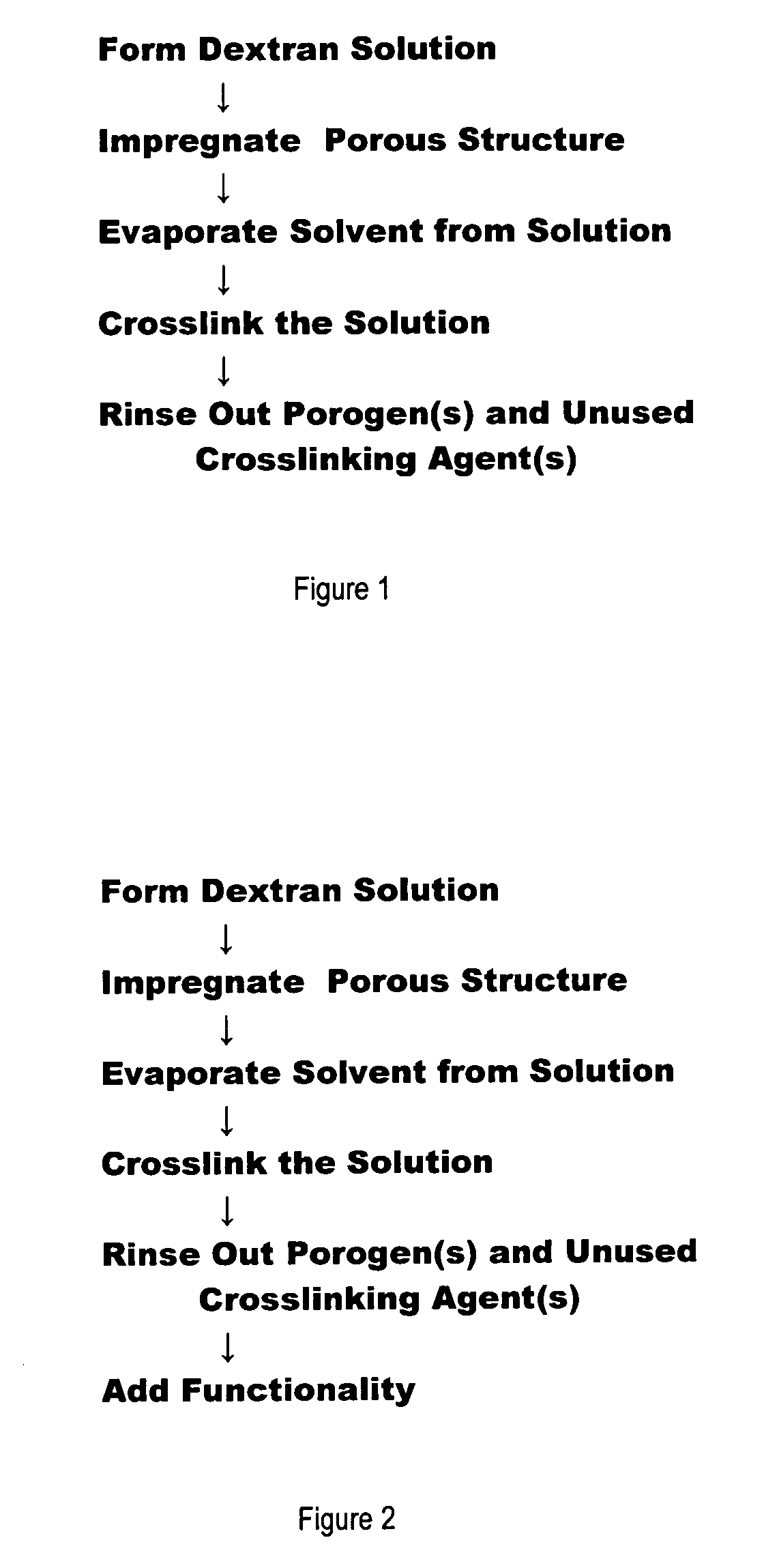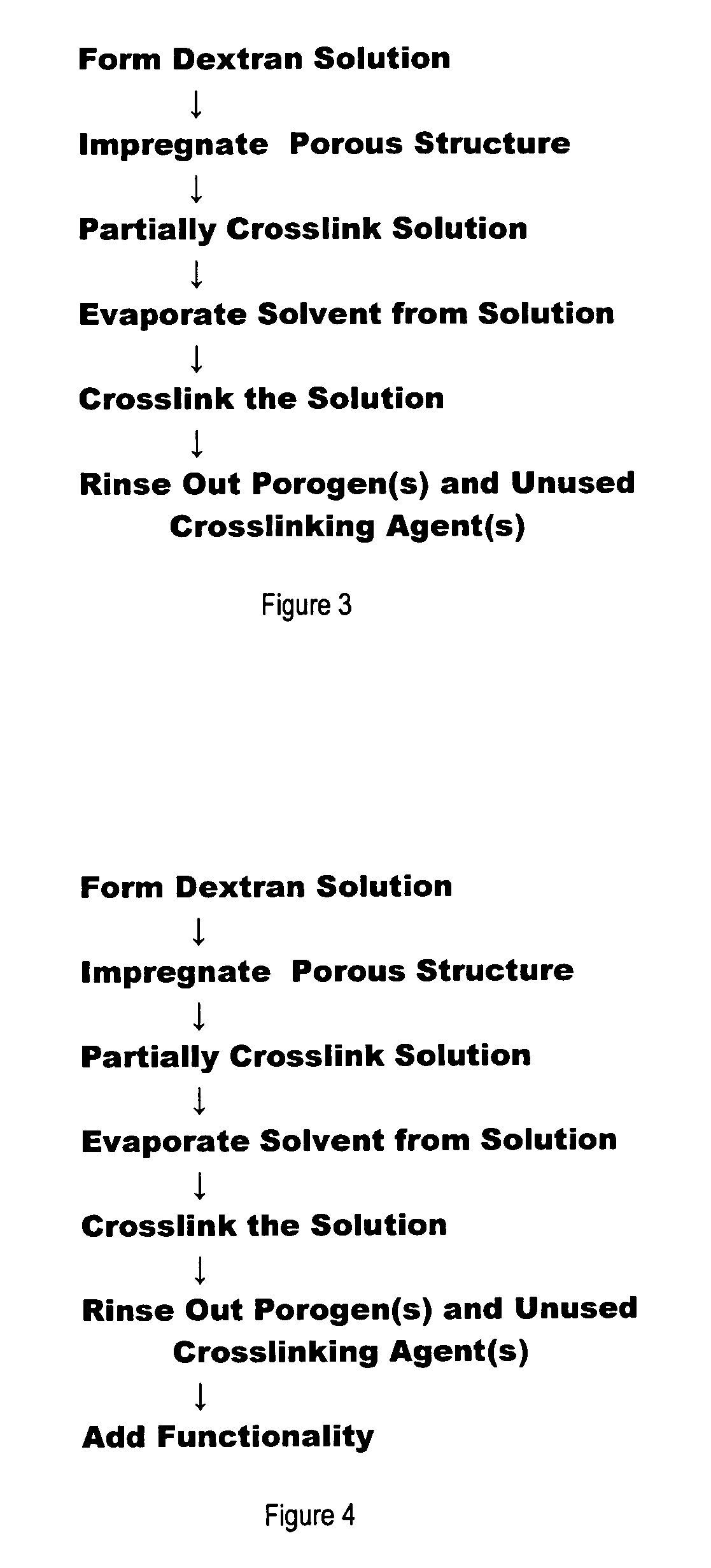Method of forming coated structures
a coating and structure technology, applied in the field of coating structure formation, can solve the problems of difficult to achieve coating effect on porous materials, difficult to create thin coatings with only surface activity, and difficult prior art process,
- Summary
- Abstract
- Description
- Claims
- Application Information
AI Technical Summary
Benefits of technology
Problems solved by technology
Method used
Image
Examples
example 1
Dextran Coating Solution Formation
[0073] A polyolefin non-woven fabric having a pore size of about 100 microns and a porosity of about 65% was coated with dextran according to the following procedure. A coating solution was prepared containing 15 g dextran (500,000 MW), 1 g polyethylene glycol diglycidyl ether as a crosslinker, 20 g polyacrylamide solution (10% in water) as a porogen, 1.5 g 1N sodium hydroxide and 62.5 g water. The non-woven fabric was exposed to the above dextran coating solution such that the fabric was completely wetted by the solution. The wet fabric was then placed between two sheets of polyethylene film and squeezed gently to remove excess solution from the surface of the fabric; the fabric was then removed from the film sheets and allowed to dry at room temperature. The dry, coated fabric was then placed in an oven at 85° C. for 4 hours to effect crosslinking of the dextran. The coated fabric was then rinsed in water several times to remove any unreacted mat...
example 2
Functionalization of Crosslinked Dextran Coating With Sulfopropyl (SP) Groups
[0074] The crosslinked dextran coated fabric of example 1 was immersed in a solution containing 6 grams of sodium bromopropanesulfonate 94 grams of 1 M sodium hydroxide, the temperature of this solution was then raised to 50° C. and the functionalization reaction was allowed to proceed at this temperature for 16 hours under gentle agitation. The sulfopropyl functionalized coated fabric was rinsed with water several times to remove excess reactants and base; the fabric was kept in water. The permeability of the modified fabric was measured to be 1.78 cm2 / min-psi in a sodium acetate buffer at pH 4.5 and conductivity of 8 mS.
example 3
Protein Binding of SP Functionalized a Dextran Coated Fabric
[0075] A 13 mm disk of the SP functionalized dextran coated fabric from example 2 was immersed in 6 ml of phosphate buffer at pH 7, conductivity of 2 mS and containing lysozyme in a concentration of 1 g / L, the fabric was allowed to remain in contact with the protein solution for 16 hours at room temperature under agitation. After 16 hours, the concentration of lysozyme in the protein solution was measured and the amount of protein bound to the fabric was calculated based on the volume of the 13 mm disk of fabric. The protein binding capacity of the fabric was measured to be 28 mg lysozyme / ml fabric.
PUM
| Property | Measurement | Unit |
|---|---|---|
| Temperature | aaaaa | aaaaa |
| Volatility | aaaaa | aaaaa |
| Wetting tension | aaaaa | aaaaa |
Abstract
Description
Claims
Application Information
 Login to View More
Login to View More - R&D
- Intellectual Property
- Life Sciences
- Materials
- Tech Scout
- Unparalleled Data Quality
- Higher Quality Content
- 60% Fewer Hallucinations
Browse by: Latest US Patents, China's latest patents, Technical Efficacy Thesaurus, Application Domain, Technology Topic, Popular Technical Reports.
© 2025 PatSnap. All rights reserved.Legal|Privacy policy|Modern Slavery Act Transparency Statement|Sitemap|About US| Contact US: help@patsnap.com



